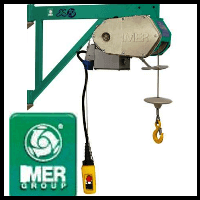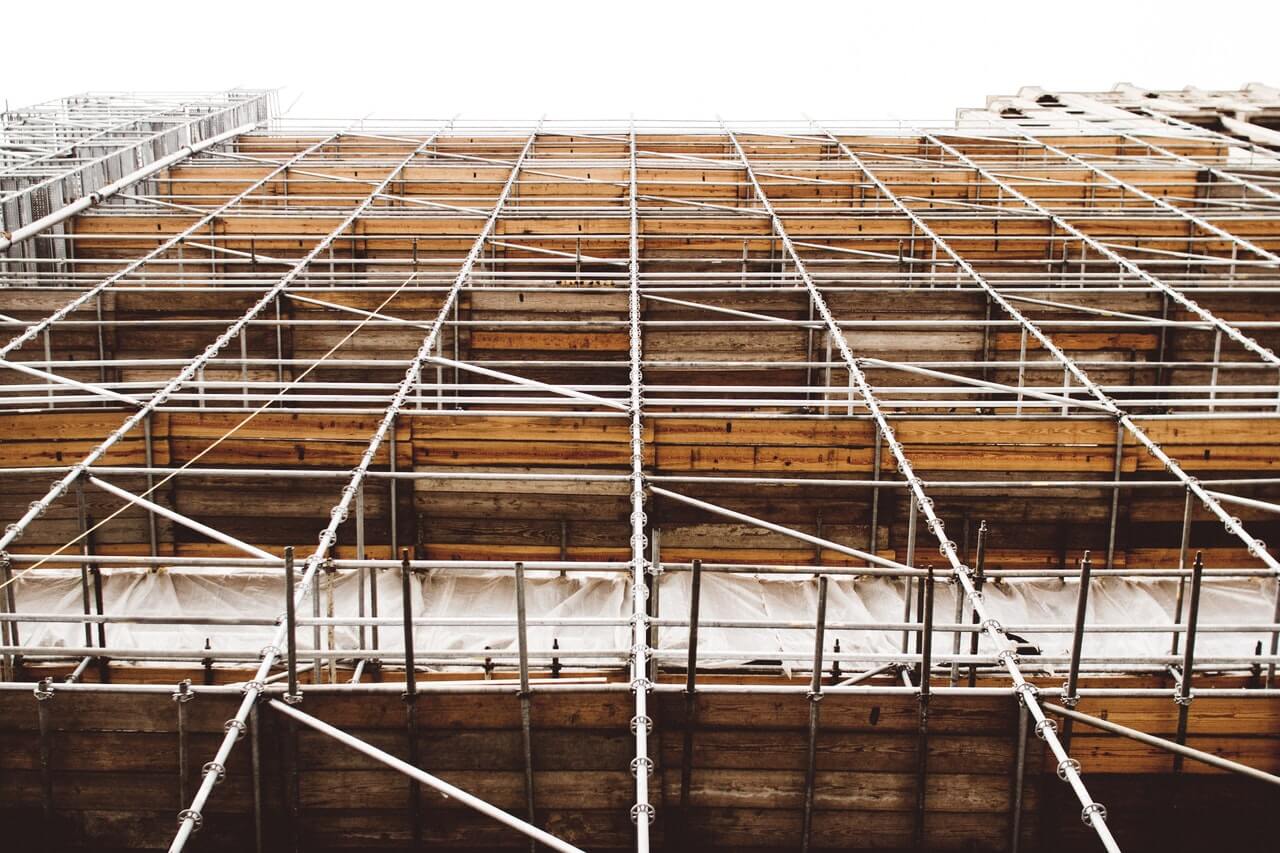7 FAQs About Scaffold Hoists
One unique type of hoist that we stock here at Lifting Hoists Direct is the scaffold hoist. While its name may give some clues as to what it is used for, there is plenty more to discuss where this equipment is involved! Read on below for seven of the most frequently asked questions about scaffold hoists.
#1 What are scaffold hoists?
This equipment, also known as a builder’s hoist, scaffolding hoist or a scaffold winch, bears many of the similarities to our other lifting products. It is used to lift and lower loads, and is electrically powered.
The difference with this type of equipment, and the reason that it gets its name, is because it predominantly attached to a scaffolding apparatus in order to complete this lifting operation.
One of the scaffold hoists that we stock
It can be positioned at various points on scaffolding, and some models will hook over the poles, while others are fitted to a prop.
#2 What industries are they used in?
Given the nature of what the equipment is most commonly used with, it is perhaps unsurprising to learn that it is most often used in the construction industry. Hence the name “builder’s hoist”.
#3 What accessories are they compatible with?
Scaffold hoists are compatible with a range of accessories, some a necessity, others just a useful added tool. You’ll often find this equipment being used in conjunction with various lengths of wire rope, used as the lifting medium.
Other accessories include wheelbarrow chains, perfect for lifting a whole wheelbarrow, and whatever its contents are. The same can be done for skips as well with skip chains. Mortar buckets are also used to lift up quantities of mortar.
#4 What are the benefits of using this type of equipment?
There are many benefits to using this type of equipment. For many construction workers, the quicker that a task can be completed, the lower cost that will be incurred for the construction company. For this, there is a need for efficiency, while of course maintaining a high level of safety.
Here’s what you’ll see this equipment being attached to
Scaffold hoists are perfect for this. They ensure that a wide range of tools and materials can be quickly lifted and lowered up to the desired height, ready for the workers to use. A further benefit of this is that it takes the strain off the workers having to carry these heavy loads.
Worker injuries, in the form of neck, back, shoulder and knee pain, are commonplace on construction sites, and scaffold hoists help to alleviate this. As well as being an obvious plus for workers, it also helps reduce any further costs that may be incurred due to worker injury.
#5 What safety measures do they come with?
Safety is always at the forefront of the minds of anyone working on a construction site or operating lifting gear. For this reason, scaffold hoists have been designed with a number of safety features.
They are created with positioning levers, which helps to eliminate any uncontrolled movements or rotations of the load that is being lifted. Some models will also enjoy thermal overload protection, which will cut any power to the motor if said motor is drawing too much power.
There are also upper limiters attached, which prevent the hoist lifting to the maximum height of the equipment. Finally, there is an option to use neoprene covered cables, which offer added protection against abrasion, dust and many other hazards that are often found on a construction site.
#6 What scaffold hoists do you stock?
You can view all of our available scaffold hoists here.
Currently, at the time of writing, we stock one type of scaffold hoist, the Imer ES150. Imer are a reputable, well-known hoist manufacturer, and this compact hoist is one of the smallest on the market. It weighs only 39Kg, but is capable of lifting up to 150Kg.
#7 How are they different to gantry hoists?
Gantry hoists and scaffold hoists are more-or-less the same in nature, and it can sometimes be difficult telling them apart! The difference in their nature comes from what they can be fitted to. While a scaffold hoist is fixed to scaffolding, a gantry hoist is instead fitted to stand-alone gantry frames.
There will be situations where scaffolding isn’t appropriate for a construction task, but the combination of gantry hoist and gantry frame allows for the lifting or lowering down the side of the building. This, therefore, produces the same desired result.
Do you have another question?
We hope that the above information has been useful in answering some questions or queries that you may have regarding this lifting gear. However, if you have found that your question hasn’t been answered, feel free to get in touch with us here.

 Fast Delivery
Fast Delivery Low Prices
Low Prices Buy Online
Buy Online
